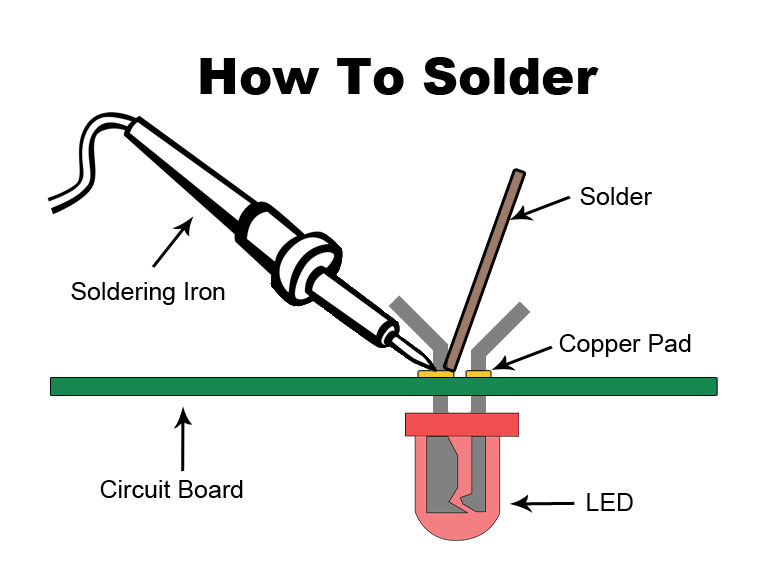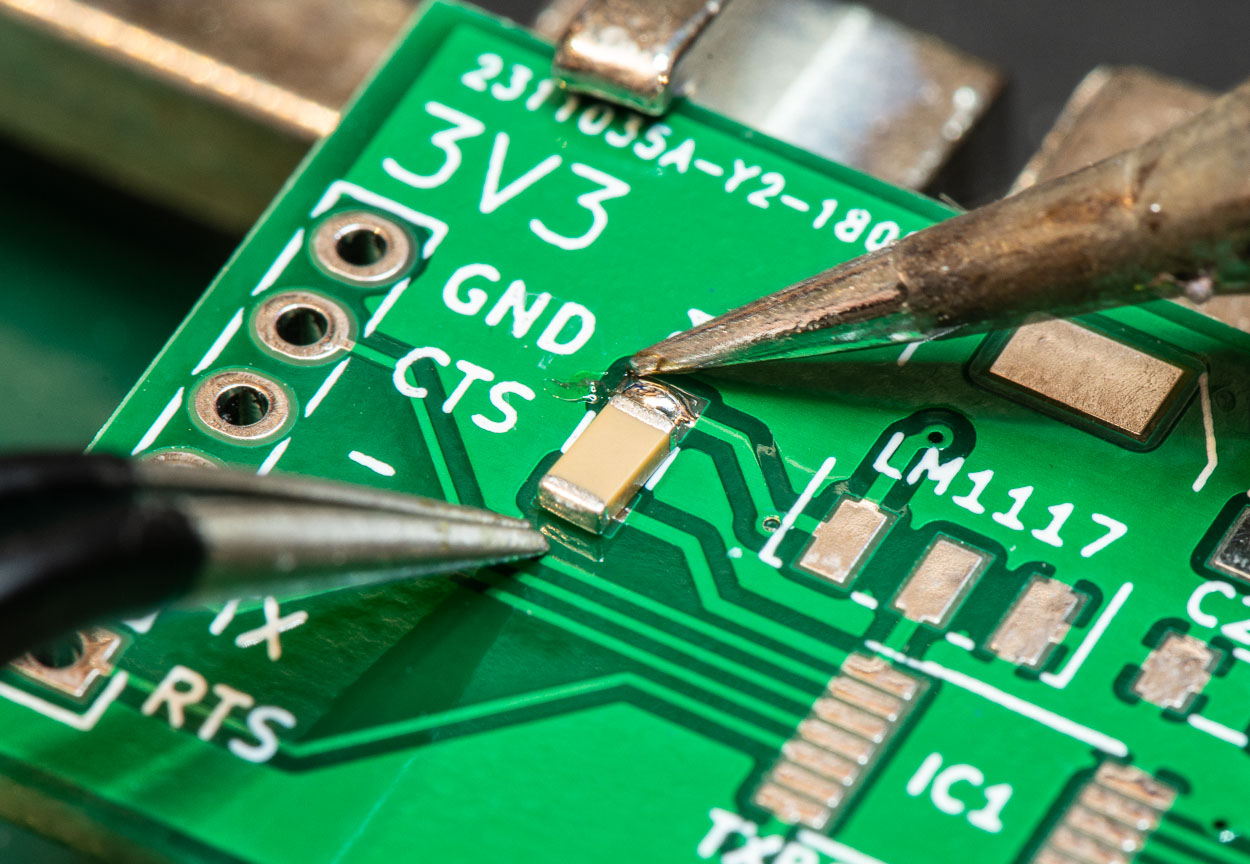Difference between revisions of "Digital technologies/Soldering/Soldering- Beginner/What is Soldering?"
Jump to navigation
Jump to search

(Created page with "{{#lsth:Digital technologies/Arduino/Arduino- Beginner|What is Soldering?}}") |
|||
| Line 1: | Line 1: | ||
| − | {{#lsth:Digital technologies/ | + | {{#lsth:Digital technologies/Soldering/Soldering- Beginner|[[Digital technologies/Soldering/Soldering- Beginner/What is Soldering?|What is Soldering?]]}} |
Latest revision as of 23:31, 28 July 2022
Soldering is a process often used when working with electronics. It consists of melting one metal to connect two or more metal pieces. This connection not only creates an electrical connection, but it also secures a component in place.
When soldering components, be sure to heat the component to be hot enough to melt the solder and not the solder itself - this allows for better adhesion between the component and solder, the goal is to ensure that the connection between the two is as secure as it can be. The iron is not meant to be used to melt solder on to it and then wipe the solder onto the component and board.
Types of Soldering
Through-hole-technology (THT)
- Through-hole-technology (THT) soldering means to solder components that have leads that will go through holes inside a protoboard or PCB.

Cited from: https://www.makerspaces.com/how-to-solder/
Surface mount device (SMD)
- Surface mount (SMD) soldering is when you will solder a component to the surface of a PCB. This type of soldering is typically used for smaller components and chips.
Safety When Soldering
- Melting solder will produce fumes and so you must always solder in well ventilated areas, this goes especially for any solder that contains lead since it can lead to respiratory irritations after extended exposure
- When Soldering be sure to wet the sponge being used in order to avoid burning it or ruining the tip of the iron
- Don’t leave the iron unsupervised and on
- Don’t touch the tip or neck of the iron
- Allow the solder and board to cool before handling
- Be sure to wait until the iron cools before storing it, in order to avoid burring or melting any thing else in its vicinity
